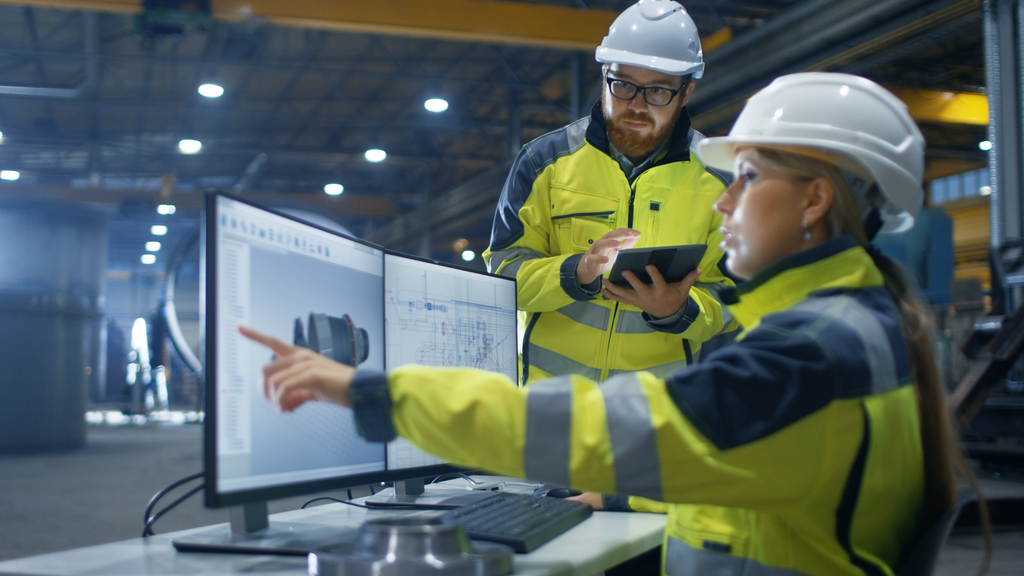
Kelly Rose
Editor

Kelly Rose
Editor
Mackenzie Peters explores the importance of identifying and understanding the hazards on your worksite and choosing the right hard hat for the job.
PERSONAL PROTECTIVE equipment (PPE) is designed to protect workers from serious injuries resulting from hazards found in the work place. It goes without saying that your head is worth protecting. A single blow can cause serious injury with long-term repercussions, and at worst prove fatal. That’s why an important factor in any safety program is the prevention of such injuries, making head protection a very serious consideration.
Quite simply, failure to choose the right hard hat for the job can put your workers’ wellbeing, and your company’s reputation and bottom line severely at risk. The Health and Safety Executive (HSE) enforce regulations to ensure the safety of workers throughout the UK, including the use of hard hats. A hard hat should be worn in all situations where there is a risk of impact from falling or flying objects, risk of head bumping, or hair entanglement. No matter what your function, if you work where hazards are present, a hard hat is required. As well as that, it is an employer’s duty to meet the requirements of the Personal Protective Equipment at Work Regulations, 1992.
In selecting the proper protective helmet, there are a number of variables that must be considered. Each kind is designed to protect against specific hazards. To determine the proper protection necessary, hazards and use limitations must first be considered. By completing a hazard assessment, you will identify the specific workplace hazards that pose a threat to your employee. When in doubt, always err on the side of caution and seek guidance if you are concerned about a potential hazard.
Types of hard hats
HSE define the categorisation of hard hats for industrial applications as:
Accessories are available from many manufacturers and are designed to incorporate additional protection from specific hazards. These manufacturers provide compatible systems that incorporate protective hard hats and caps with hat frames, visors, face shields, chin guards, and adapter kits for various applications. Hearing protection, eye protection and communication systems are also options. There are sun shades to keep wearers’ ears and neck protected from the sun and heat and sun shields to protect from the sun’s harmful rays. And let’s not forget headbands made from terrycloth for added comfort.
Look for markings
If a helmet complies with EN 397:2012 requirements, there’s proof! Each helmet must be marked with proper certification. Inside the hat, you’ll find the standard number, manufacturer, CE mark and model identification. Compliant hard hats must include the year and quarter (or month) of manufacture along with the manufacturer's name. HSE and British Standards Institution guidance also states that the hard hat must contain the size range on both shell and harness, an informative label with specified wording, and list the shell material.
At times some people may find wearing hard hats uncomfortable or inconvenient. However, the thought is that if employees are provided with stylish, comfortable and safe PPE, they are more likely to wear it, thus following safety regulations. That’s why today, hard hats come in a variety of colours, styles and offer various tailored applications. Although updated styles are being introduced that are geared toward providing added safety and comfort to the wearer, as of late, they are also being driven by fashion.
And no one ever said hard hats had to be boring. One way to provide personalisation is by customising hard hats with logos. This is a cost-effective way to brand your equipment with your corporate identity. Customised logos not only provide obvious marketing benefits, they can help to commemorate special occasions and aid in employee or work area identification. But customising doesn’t stop there; you can use customised artwork, and you can add striping, or use corporate slogans or messaging. If safety at night is a factor, consider hats that glow in the dark.
The fact remains that if a worker is comfortable, and can infuse their personal style, they will wear their protective headwear for longer, extended periods of time. It is worth mentioning that because hard hats must be inspected for dents, cracks and other imperfections before use, personalisation of helmets must follow strict guidelines. Health and Safety Executive guidelines suggest that any personalisation must be within the manufacturer's guidelines to prevent the elimination of electrical resistance and must allow the helmet underneath to be inspected for dents and cracks.
Care and maintenance
The hard hat has two basic parts: the shell and the suspension system. In some cases, a chinstrap is applicable. Each component requires periodic inspection and maintenance to ensure its continued ability to protect the worker. Inspecting the hard hat for any damage prior to use is vital, and proper care and maintenance should extend the hard hat’s longevity.
The key points to note for head protection are:
There is no debating that hard hats can save your life. As with anything that will be worn in a protective manner, it is necessary to choose the correct hard hat to protect your head form the hazards present in your specific work environment. Exposure to such hazards can be minimised by using safe work practices and procedures, good communication, employee training and education, ongoing engineering and maintenance programs and work site safety inspections. But above all, choosing the proper PPE is a vital component. And, with the proper care and maintenance of that PPE, work site safety can be secured.
Mackenzie Peters is global product group manager at MSA Safety. For more information, visit www.msasafety.com/global


MSA Safety
Hopton Park
Devizes
SN10 2JP
UNITED KINGDOM
01380 732700